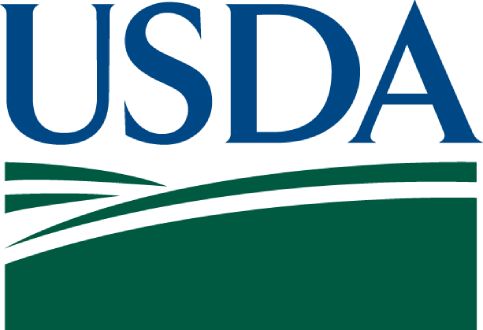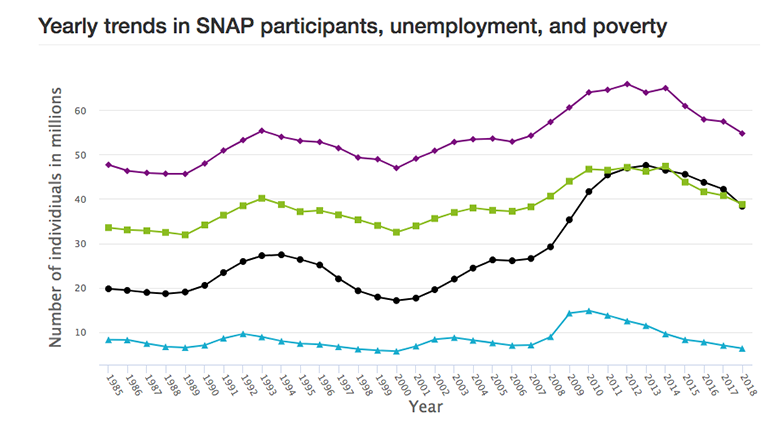Project Overview
Mathematica updates and maintains FNS’s SNAP microsimulation models, uses the models to conduct policy simulations, prepares the edited SNAP Quality Control (QC) data file, and publishes annual reports on the characteristics of the current SNAP caseload and on national and State SNAP participation rates.
FNS requires detailed information on the current SNAP caseload and the estimated SNAP-eligible population as well as estimates of SNAP eligibility and participation under proposed changes to SNAP policies. Timely access to these data allows FNS to make evidence-based decisions on how to administer the program and synthesize information on the estimated impact of proposed changes for policymakers and stakeholders.
U.S. Department of Agriculture, Food and Nutrition Service

The Supplemental Nutrition Assistance Program (SNAP), administered by the U.S. Department of Agriculture (USDA) Food and Nutrition Service (FNS) in partnership with State governments, provides nutrition assistance to eligible, individuals and households in need.
Mathematica has been working alongside the U.S. Department of Agriculture’s Food and Nutrition Service (FNS) to develop and use microsimulation modeling to support FNS as it assesses proposed changes to SNAP policy, develops annual budgets, and conducts supporting research. Important questions arise when changes to SNAP policy are proposed, including how the proposed change is estimated to affect program costs, SNAP participation and eligibility, and the characteristics of the SNAP caseload. In response, Mathematica uses microsimulation modeling to produce simulations and tabulations that enable FNS and other policymakers to better understand the populations potentially affected by such changes.
Under this project, Mathematica maintains and enhances FNS’s SNAP microsimulation models, provides quick response analyses and technical support, prepares the annual SNAP Quality Control (SNAP QC) data file, and produces annual reports on the characteristics of SNAP households and national and state SNAP participation rates. In addition to these core tasks, Mathematica provides a variety of services as requested by FNS. These have included the following:
- Preparing and updating SNAP data visualizations that display national and state-level characteristics of SNAP households, trends in SNAP participation over time, and state SNAP participation rates. Hosting the visualizations online.
- Examining the characteristics of elderly people participating in or eligible for SNAP and producing detailed state SNAP participation rates for elderly people.
- Examining the impact of the reengineered Survey of Income and Program Participation (SIPP) on the MATH SIPP+ microsimulation model. Assessing the quality of the asset data and imputations for households in the 2014 SIPP.
- Convening an expert panel to identify and prioritize research needs related to using Census Bureau survey data linked with state SNAP administrative data to improve SNAP eligibility simulations. Based on the expert panel recommendations, (1) assessing the quality of and standardizing state administrative data files held by the Census Bureau and (2) using linked survey and administrative data to improve SNAP eligibility simulations.
- Providing support for statistical questions and data analysis for the SNAP QC system. Estimating fiscal year 2017 payment error rates for states that FNS found had bias in their SNAP QC system during the fiscal year 2017 review period.
- Conducting a technical review of the existing SNAP participation forecasting model.

Over time, changes in the number of SNAP participants usually correspond with changes in the number of individuals with income below the federal poverty level. That is, the SNAP caseload typically increases when the number of individuals in poverty increases, and decreases when the number of individuals in poverty decreases.
Explore TrendsEvidence & Insights From This Project

Empirical Bayes Shrinkage Estimates of State Supplemental Nutrition Assistance Program Participation Rates: Fiscal Year 2020 and Fiscal Year 2022
This report presents estimates of State SNAP participation rates for fiscal years 2020 and 2022. The estimates were derived using empirical Bayes shrinkage estimation methods and data from the Current Population Survey, the American Community Survey, SNAP Quality Control, and administrative records.
Learn MoreProgress is best made together.
Partner with us at the intersection of data science, social science, and technology to progress from inquiry to insight to impact. Our evidence-informed solutions empower you to see clearly and act quickly.
Efficiency Meets Impact.
That's Progress Together.
Mathematica delivers evidence-based solutions to optimize programs and policies for effectiveness, efficiency, and impact. Learn more about becoming a client or partner.
Work With Us
